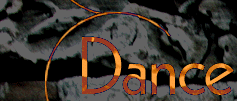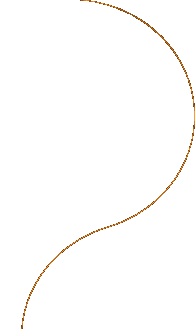


Royal University of Fine Arts
Members of the 2001 Tour
Artist Stories
Proeung Chhieng
A note about names: In Cambodia the polite form of address is to append "Mr." or "Ms." to a person's first name, not his or her family name. Too, surnames precede first names. We follow this protocol here. Example: Proeung Chhieng: Proeung is a surname, Chhieng is a first name, Mr. Chhieng.
Though few written records exist, current practices point to a centuries-long lineage of performing arts traditions, village and temple rites, and events in Cambodia. Arts instruction in what we think of as modern academic settings began in Cambodia in the early 20th century with the founding of the School of Arts in Phnom Penh in 1919.
In the 1950s, the Conservatory of Performing Arts (now the Department of Arts) was created. In the wake of independence, in 1965 King Norodom Sihanouk formally established the Royal University of Fine Arts. Increased emphasis was placed on fostering indigenous scholarship in the arts and traditions of the court, the temple, and the village were brought together. This new model — a public affirmation of Cambodia's modern national identity — precipitated a decade-long period of growth, transforming how Khmer culture was conceived, created, and preserved.
All of this came to a halt when the University, along with every other educational, religious, and cultural institution, was closed by the Khmer Rouge in 1975, and Phnom Penh's inhabitants — including its artists, were dispersed under forced evacuation to the country-side. Throughout the country, all ritual and formal performance ceased.
In 1979, having survived by hiding their identities, a handful of professional performers returned to Phnom Penh and immediately put out a call to all artists to return. Cambodia's remaining dancers and musicians responded. In 1980, professional artists reunited for the first time in emotional performances that were at once an agonizing recognition of the loss of life — so many were killed or missing — and a reaffirmation of identity. The School of Fine Arts reopened later that year.
In 1988, the School became the University of Fine Arts, attaining the status of the pre-Khmer Rouge conservatory. In 1990, members of the University toured to the USA, in the first large-scale tour of work from Cambodia to this country since 1971. In 1993, the University was renamed the Royal University of Fine Arts.
Today, RUFA along with the Department of Arts are the primary repositories of Khmer culture. While the two institutions often share personnel and may participate in joint projects and tours, RUFA is distinguished for its educational mission. Both institutions are administered by the Ministry of Culture, under the direction of HRH Princess Buppha Devi, one of the most important dancers of her generation.
RUFA's colleges of archeology, architecture, plastic arts, music and choreographic arts issue undergraduate degrees. Its college of Choreographic Arts is the umbrella for dance, theater and circus arts majors. Continuing the history of conservatory training, dancers as young as six years of age begin their studies in the time-honored traditions of the form, integrated into a program of academic study.
The process of reconstruction continues to be arduous. Though much has been recovered during the last 20 years, much work remains to be done. Documentation of Khmer dance had been minimal, and many of the few written records, photographs and films that had existed were lost during the Khmer Rouge period. The transmission of knowledge from teacher to student that is the basis of training, interpretation and creation has taken on added significance and urgency. "The past is a crucial link to the present and the well-spring of our future," says Proeung Chhieng, Vice Rector and Dean of Choreographic Arts at the Royal University of Fine Arts and Artistic Director of the 2001 tour.
Ranging in age from eighteen to seventy-one, the project's forty-five company members frame the face of today's Cambodia. Together they embody decades of knowledge about Khmer performance practice.
The twenty-two classical dancers, seven folk dancers, six musicians, three signers, two costumers, and two staff members participating in the 2001 tour Dance, the Spirit of Cambodia hail from the capital city of Phnom Penh and five of the twenty provinces — Kandal, Kompong Chhnang, Takeo, Kompong Thom, and Kompong Spe.
Eight of the dancers were born after the reign of the Khmer Rouge. Most performers, like Ms. Pen Sok Huon, entered RUFA as students in the 1960's and early 70's, becoming teachers or professional dancers with the Department of Arts before they were forced into hiding or exile. An excerpt from Mr. Nguon Sam Ath's biography offers an all-too-common reflection of that period:
1968–75: Member of Department of Arts
1975–79: Peasant during Pol Pot
1979–80: Dance instructor in Battanbang
1981–90: Member of Department of Arts
1991–92: Research Department at the Ministry of Culture
1993–present: Teacher, RUFA
Taken together, those touring to the USA in 2001 have performed in Australia, Belgium, Bulgaria, China, Czechoslovakia, Denmark, England, France, Germany, Holland, Hong Kong, Hungary, India, Indonesia, Ireland, Italy, Japan, Korea, Laos, Malaysia, Mongolia, Russia/USSR, Singapore, Sweden, Switzerland, Taiwan, Thailand, the United States, and Vietnam.
(Coming soon)
Vice Rector and Dean of Choreographic Arts at the Royal University of Fine Arts (RUFA) in Phnom Penh, Proeung Chhieng is leading the efforts to record and teach the choreography, music, and history of Cambodia's dance traditions. Directing international initiatives to rebuild RUFA's infrastructure and formalize its academic and research programs, he has established RUFA as the primary center for Cambodia's performing arts traditions and scholarship.
Born in 1949, Mr. Chhieng trained from age seven in the role of Hanuman, the white monkey general in the Reamker (Cambodia's version of the epic Ramayana) and was a principal dancer with the Royal Cambodian Ballet. In North Korea on a scholarship when the Khmer Rouge assumed power in 1975, he chose to return to Cambodia and survived by hiding his identity. In 1979, he and his colleagues began the arduous task of rebuilding this magnificent culture, establishing RUFA as a central site for communications and education for the performing arts. With his colleagues, he has brought together surviving artists in Cambodia, created links to the refugee communities in Thailand, the USA and Europe and guided the efforts to rebuild a fragmented and largely undocumented repertory. During the last 20 years, he has organized performance tours throughout the world (including the last USA tour in 1990), arranged for foreign scholars to teach and carry out research, and represented Cambodia at a number of important conferences, symposia and workshops, furthering his mission to communicate the meaning and importance of Cambodian dance throughout the world.
In addition to his responsibilities at RUFA, Mr. Chhieng is the co-director of the Cambodian Arts Mentorship Program, a teaching and documentation program administered by the Asian Cultural Council. He is senior consultant to the Japan Foundation-funded Dance Notation Project, and an advisor to Cambodia's minister of culture, H.R.H. Princess Buppha Devi. He was the 98-99 recipient of the prestigious John D. Rockefeller 3rd Award, for his significant contributions to the study, understanding and practice of Cambodia's performing arts; this Asian Cultural Council award is supported by the Rockefeller Foundation.
